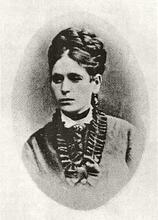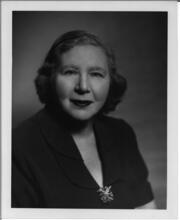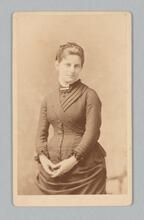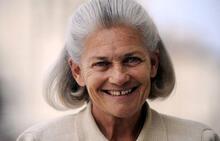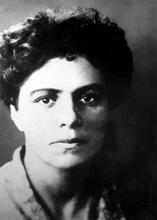Sabbateanism
Sabbateanism was centered on the charismatic personality of Shabbetai Zevi, who was believed by many to be the ultimate redeemer and an incarnate aspect of the kabbalistic godhead. Uniquely in the history of rabbinic Judaism, Sabbateanism displayed a particular interest in women and was especially attractive to them. Due to Zevi’s female-liberationist, egalitarian vision, many women became saintly visionary mystics and celebrated spiritual masters. Zevi’s behaviors were clearly designed to dissolve altogether the gender boundaries anchored in halakhah, or, alternatively, and equally in defiance of traditional Jewish practice, to establish a symmetric equivalence between the sexes, whereby men and women, separately but alike, would play an equal part in every aspect of the ritual and spiritual life of the messianic community.
Sabbateanism—a messianic movement of unprecedented duration and scope—was centered on the charismatic personality of Shabbetai Zevi, a seventeenth-century Jew from the Ottoman port-town of Smyrna who, even after his conversion to Islam in the summer of 1666—a discreditable act which was paradoxically explained in kabbalistic terms as the most challenging part of his mission—was believed by many to be the ultimate redeemer and an incarnate aspect of the kabbalistic godhead. The messianic frenzy he created spread rapidly throughout the Jewish world to become a mass movement, but it subsided gradually following his conversion and evident failure to accomplish his mission by the time of his death in 1676. Nevertheless, as an underground current in kabbalistic Judaism, Sabbateanism persisted until at least the second decade of the nineteenth century. It operated clandestinely, in diverse sectarian groupings, each headed by its own prophet or Messiah, who was considered to be a fresh embodiment of the messianic soul that had once inhabited Shabbetai Zevi, and some, like him, were regarded as incarnations of certain aspects of the divine.
Prophesying Women
Uniquely in the history of rabbinic Judaism, which exempted women from much of its formal cult, and which generally barred them from all positions of public office and authority, Sabbateanism displayed a particular interest in women and was especially attractive to them from the outset. It empowered many by acknowledging their prophetic inspiration, thus often turning them into the movement’s most ardent and effective propagandists; it identified women in their own right as a target-audience for its redemptive message; it granted them access to rituals and esoteric doctrines traditionally considered an exclusively male domain; it invested the wives of its leading protagonists with the aura and authority of messianic-divine consorts, and in one case it even promoted an unmarried woman to the status of “Holy Virgin”—its messianic figurehead and female incarnation of the divine. Almost everything that has been attributed, without justification, to women in Hasidism during the eighteenth and nineteenth centuries can rightly be attributed to the women who took part in the heretical messianic revolution of Sabbateanism. Admittedly, the evidence for this is fragmentary and much of it comes from contemporary polemics directed against the movement, suspect as these are of exaggerating women’s involvement precisely in order to denigrate Sabbateanism, since the very association with women was enough to suggest licentious morality and to expose the movement as totally alien to normative Judaism and its values. Nevertheless, it is possible to detect the same gender-revolutionary impulses that marked the earliest beginnings of Sabbateanism even in its final stages, through all its ramifications and transmutations.
In a variety of independent, mutually corroborative reports by both Jewish and gentile observers, numerous women feature time and again as visionaries who proclaim the messianic advent of Shabbetai Zevi. Most of these reports, however, place the prophesying women in the context of the extraordinary phenomenon of mass prophecy, in which ignorant men and children are also said to have taken part. Their prophetic pronouncements are invariably described as being either incoherent or banal, consisting of ecstatic exclamations or repetition of certain biblical verses, this usually culminating in loss of consciousness followed by oblivion of the entire event. Prophetic outbursts of this nature must clearly be distinguished from that other type of Sabbatean prophecy—the fully articulated literary output of the leading male exponents of the messianic The esoteric and mystical teachings of JudaismKabbalah, such as Nathan of Gaza (1643/4–1680) and Abraham Miguel Cardozo (1626–1706). However, quite a number of women are said also to have prophesied extensively not only in Hebrew but also in Aramaic—the language of the classical kabbalistic book Zohar, of which they were normally held to be ignorant, and some apparently recited long sections of the Zohar by heart, or even revealed and offered expositions of fresh kabbalistic mysteries, which were supposedly recorded on “over ten thousand pages” (Emden, Zot Torat ha-Kena’ot, 9). The notion that at least some Sabbatean women may have studied Kabbalah and could have read and interpreted the Zohar is not as far-fetched as it may sound, since there is evidence that efforts were being made within the movement to instruct them in it (on which see below). Notably, however, there are no extant kabbalistic writings attributed to any of the Sabbatean prophetesses, and it is impossible to tell whether this is to be taken as proof that such writings never existed, or whether they fell victim to the suppression of Sabbatean literature by the sectarians themselves, in self-defense, or by their opponents and persecutors who strove to eradicate all traces of their heretical kabbalistic legacy.
Some Sabbatean women are described in greater detail and credited with prophetic insight and supernatural powers that match and even anticipate, inspire or exceed the powers of the men around them. Jacob Emden, who collected every scrap of evidence he could obtain on the messianic heresy he combated all his life, reports in the name of his father, the Hakham Zevi—himself a leading opponent of Sabbateanism, who witnessed the height of the messianic frenzy as a child—that
There were women at that time who would say: “Let us go and kill demons.” They would put on white linen garments [in the traditional manner of male kabbalists] and perform the guiding forward and backward [of an imaginary slaughtering knife] with their hands, which were stretched out in the air, one to one side and one to the other, and they would spread out their robes to receive large quantities of blood from the air, as if by this stretching out in the air they had spilled a great deal of blood with their hands, so that it appeared like a flow of blood from the slaughter of an animal. And one woman said: “Who would like me to give them a scent of paradise?” And she caught from the air with her hands that were raised towards Heaven and bestowed a most wonderful scent upon anyone who wished (Emden, ibid.).
Sarah, Shabbetai Zevi’s third wife—an orphaned survivor of the 1648–1649 Chmielnicki massacres in Poland, about whose unchaste adventures contemporary rumors abound—was one of the first to prophesy and proclaim her future husband Messiah. Even before her arrival in Egypt, where she sought out and married him in the spring of 1664, she was apparently filled with the consciousness of being destined to become the Messiah’s bride and consort. As a young girl, while living for a time in Leghorn, she was known as a truthful fortune-teller, capable of revealing to anyone who consulted her “the root of his soul,” namely, the entire history of his soul’s migration through a sequence of re-embodied lifetimes—a power traditionally associated with the illustrious sixteenth-century Safed Kabbalist Isaac Luria (1534–1572), and subsequently ascribed only to the most distinguished male kabbalists of their day. Other women were similarly credited with “apparitions of Elijah” and other heavenly beings, on the strength of which they predicted or confirmed the messianic kingship of Shabbetai Zevi. In a number of places, e.g. Galata (the European quarter of Constantinople) and the island of Corfu, the recipients of such revelations are said to have been young girls or virgins, who were the first to announce the Messiah’s advent, becoming themselves the objects of veneration and the centers of the local messianic cult. In Smyrna, the two young daughters of Hayyim Peña—a wealthy dignitary who was initially hostile to the messianic agitation in the town—were so persistent and persuasive in their remarkable prophetic revelations that they managed to turn their father, and with him the entire community, into ardent supporters of Shabbetai Zevi.
Sexuality
The preponderance of virgins among these prophetesses may not be entirely accidental. It could well reflect a certain syncretistic tendency that was inherent in the Sabbatean movement from the start, which may explain its extraordinary readiness to acknowledge the spiritual powers and prophetic inclinations of women. The rabbinic tradition had always censured or treated such inclinations with suspicion, viewing women as inextricably bound to their corporeal nature and sexual function, which rigidly determined their gender roles and excluded them from the intellectual and spiritual pursuits accessible only to men. By contrast, both the Christian and the Islamic traditions, with which Sabbateanism was engaged throughout its history, while generally sharing with Judaism the construction of the female nature that led to the exclusion of women from positions of religious authority, did nevertheless admit them, especially as virgins, ascetics and celibates, to the ranks of their saintly visionary mystics and celebrated spiritual masters, deeming such women to have transcended corporeal sexuality and thus to have crossed the boundaries that confined them to their gender-determined identity. The phenomenon of the “virginal” prophetesses may well reflect the tacit assimilation of this principle by the messianic believers. Among the asexual and thus spiritually and intellectually enhanced Sabbatean prophetesses were the two daughters of Arieh Leib Schottin, the mid-eighteenth-century rabbi of the Hungarian community of Mattersdorf, whose entire family was implicated in the sectarian heresy. Both daughters were credited not only with visionary powers but also with the exceptional accomplishment in women of extensive biblical and talmudic learning, and local tradition had it that they were both “old maids.” This unusual reference to their life-long spinsterhood—a condition that was virtually unknown in traditional Jewish societies—may well suggest not an accident of biography but rather the rejection of the normative Jewish framework of marriage, which in turn implies the adoption of celibacy—the state most conducive to the cultivation of the spiritual life.
The impression that this was a distinct if by no means universal or consistent Sabbatean trend is strengthened by the testimony of Moses Porges—a young Sabbatean from Prague who, at the end of the 1790s, spent several months at the Offenbach “court” of the Polish Sabbatean Messiah Jacob Frank (1726–1791), during a time when, following whose evidence is corroborated by several independent sources, notes the complete separation between the sexes and strict prohibition on marriage that prevailed within the “court” and describes the physical punishments inflicted on all the young men who confessed their “desire for a female” (Mandel, 162). In all probability, this regime was instituted by Jacob Frank himself, who also conferred on a select group of his close associates the titles of “brothers” and “sisters”—clearly evocative of the Christian institution of the celibate monastic orders, and there is little doubt that this extinction of sexual activity among the sectarians was meant to intensify the spiritual quality of their experience of the “court.” At the same time, however, there is evidence to suggest that the discipline of sexual abstinence was broken intermittently by orgiastic ceremonies conducted at precisely those times—the holiest days on the Jewish calendar—at which the Sabbateans had traditionally engaged in antinomian activity. Ruchus Frank, for example, is said to have summoned to his private chamber three young women whom he forced to carry out “shameful acts,” “abominations” and “whoredom and other forbidden acts” on the Day of Atonement of 1800, and Jacob Frank himself was reported early in his career to have presided over a secret ceremony at which all the “brothers” and “sisters” were to join him and his wife in a darkened room where partners were exchanged in a collective sex-act. The coexistence of sexual abstinence and profligate rites of illicit sexuality, which is by no means unusual in the history of sectarian religion, was a characteristic feature of Sabbateanism from the start. The rationale for both modes of behavior was anchored in ancient rabbinic and kabbalistic eschatological traditions whereby, on the one hand, final preparation for the imminent messianic advent required intense penitential activity, this usually assuming the form of ascetic mortification and abstinence, while on the other hand, the dawning of the messianic age signaled progression from governance by the restrictive “Torah she-bi-khetav: Lit. "the written Torah." The Bible; the Pentateuch; Tanakh (the Pentateuch, Prophets and Hagiographia)Torah of Creation”—the Mosaic Law with all the The legal corpus of Jewish laws and observances as prescribed in the Torah and interpreted by rabbinic authorities, beginning with those of the Mishnah and Talmud.halakhic prohibitions that sprang from it—to governance by the expansive “Torah of Emanation”—the eschatological New Law, which transcended, revoked or even reversed all the prohibitions of the old. Shabbetai Zevi himself is known to have oscillated between the two extremes, and this ambivalence found its expression also in the emergence of virginal or celibate prophetesses—itself a breach of the traditional Jewish norm for women—alongside the more infamous breach of the norm by the Sabbatean “whores”—women whose prophetic powers were associated with outrageous sexual transgressions.
One of the most notorious of these prophetesses was Haya Schor, daughter of the well-known eighteenth-century Sabbatean preacher Elisha Schor of Rohatyn, whose entire family was actively involved in the sectarian heresy in Poland. She was reputed to have “whored” with all her brothers, brothers-in-law, and other Sabbatean men, while also featuring as the focus of a secret ceremony held at her brother-in-law’s home in Lanskroun during Jacob Frank’s visit there in January 1756. On that occasion she was observed dancing naked with a “Torah crown” on her head, while the male heretics caroused around her and fell upon her to embrace and kiss her body. Jacob Emden (1679–1776) compares her to Sibylla, the priestly Greco-Roman prophetess, and to Venus, the Roman goddess of love, who in German folk culture assumed the character of a demonic seductress (Sefer Shimmush 20a). The evidence he collected from repenting Sabbateans who confessed before the rabbinical court of Satanov in the summer of 1757 suggests that Haya Schor exerted a great deal of power in the Sabbatean circles of her day. She initiated new recruits to the sectarian fellowship, not hesitating to pronounce some candidates unfit and to withhold her sexual favours from them if she judged them to be insufficiently proficient in the doctrines of the sect or if they exhibited reluctance to consume the prohibited fat of an animal—an antinomian act by which she tested the measure of their sectarian allegiance. She acted quite independently of her husband, at times defying his authority even if, as was customary among the Sabbateans, he was eager to sanction her adulterous acts, viewed within the sect as positive commandments, “mending” or “restoring” the redeemed world to its final state of perfection.
Influences
This unreserved acknowledgement of the female capacity for prophecy, and the consequent empowerment of women within the sect, may indeed be explained as the adoption by the Sabbateans of certain beliefs and norms of conduct that originated in the non-Jewish environments with which they had come in contact. Shabbetai Zevi himself, and subsequently the circle of Sabbateans in Salonika who followed him in conversion to Islam, are said to have maintained close relations with members of the Bektashi Sufi order, who operated in their immediate proximity, and with whom they shared a number of distinctive characteristics. Among these was the exceptional attitude to women—both married and celibate—whom the Bektashis allowed to appear unveiled in public, admitting them as equal and fully active members of all their fellowships, as well as the rumored sexual depravity of their secret ceremonial gatherings. In the Christian context, too, parallels and possible influences have been observed, even by contemporary eyewitnesses, between the messianic frenzy that erupted among the Jews and the wave of prophetic “enthusiasm” that swept through post-Reformation Europe, both Catholic and Protestant, where such radical sects as the “Family of Love,” the Anabaptists, the Mennonites and the Quakers viewed their women as fully capable of receiving the “spirit” and enabled many to emerge as leading apocalyptic preachers and prophetesses. In the case of Jacob Frank, there is evidence that he was in contact with some of the radical Russian-Orthodox sectarians who had fled persecution to the border areas of Poland in the course of the eighteenth century. Among these sectarians, as at Frank’s Offenbach “court,” marriage had been abolished, the male and female members were designated “brothers” and “sisters,” and women often functioned as the focus of the apocalyptic cult in much the same way as did his daughter Eva.
While all these parallels point to the probability of some external stimuli and influences, it may also be possible to locate the Sabbatean prophetesses within a predominantly Sephardi tradition of female spirituality and religious activism, whose origins can be traced back to the aftermath of the expulsion of the Jews from Spain. According to the records of the Inquisition, a considerable number of female Jewish converts to Catholicism—including, most notably, a number of young girls—prophesied the imminent Redemption of the Jews and prompted what became a mass penitential movement among the conversos, who were resuming the practice of Judaism in anticipation of the messianic advent. The movement was quickly suppressed, with the leading prophetesses burnt at the stake, but clandestine allegiance to some residual form of Judaism persisted among the conversos for generations, usually in the privacy of their homes, where it was transmitted and supervised chiefly by their womenfolk.
This Spanish legacy of female prophetic spirituality and active involvement in the preservation of Jewish rites may account for the remarkable prevalence and prominence of prophetically inspired women in the Jewish communities of Safed, Jerusalem and Damascus at the turn of the sixteenth and seventeenth centuries, when all three communities were inundated by the influx of conversos who had left Spain to re-settle in the Ottoman Empire, where they were able to embrace Judaism openly. The main source of information on this is the visionary diary of the famous Kabbalist, Hayyim Vital (1542–1620). Without the slightest indication that he might be describing an unusual or questionable phenomenon, he notes a considerable number of women whose prophetic techniques and insights he clearly regards as authoritative. Although some of their pronouncements may be classified as belonging in the pathology of prophecy, inasmuch as they arise from involuntary spirit possession and require a “cure” by exorcism, others are made quite freely, empowering the women to challenge the male leaders and to expose the immorality of their communities. It is not impossible, therefore, that the Sabbatean movement’s extraordinary receptivity to the prophetic inspiration of women was the culmination of a long-standing, albeit unacknowledged and sparsely documented, tradition of female Jewish spirituality.
Two distinctive developments of the Sabbatean doctrine could have expedited the movement’s egalitarian tendency that enabled the women within its ranks to emerge as full-fledged protagonists. One was the substitution of the framework of halakhic obligations, meticulous compliance with which had always been the key to personal salvation, by the newly promoted value of absolute faith, which alone could now secure the individual’s entitlement to salvation. Faith in the person of Shabbetai Zevi was said to be capable of eradicating the sins of even the most persistent of halakhic offenders, while conversely, the slightest doubt in his messianic stature was enough to render the most pious individual a condemned sinner. This doctrinal shift, first signaled in Nathan of Gaza’s earliest propagandist writings, became more pronounced after Shabbetai Zevi’s conversion and increasingly in the years following his death, as the gulf between his vision of the Redemption and its failure to materialize in reality could not be bridged except by the paradoxical doctrine of faith in the apostate Messiah. The shifting center of gravity from halakhically prescribed action to pure faith had a significant implication for women. Traditionally, their relationship to the positive commandments of Judaism, from which they were largely exempted, was extremely limited and indirect, to the extent that their personal salvation had been said to depend on the single merit of facilitating the observance of the supreme precept of Torah study by their husbands and sons. By contrast, the relationship of women to the Messiah—their personal faith in him and his redemptive mission—was direct and free of any gender-determined limitations, since there existed no mechanism by which to distinguish between the sexes in respect of faith. Consequently, the greater the sectarians’ emphasis on faith as the ultimate test of messianic Judaism, and the more they distanced themselves from the gendered framework of halakhic obligations, the greater grew the scope that opened up for women to become full and equal participants in the religious life of the sectarian fellowships.
The second doctrinal development that might have facilitated the empowerment of women was the transformation in some Sabbatean circles of the nature of tikkun—“reparation” or “restoration to perfection,” which is how the kabbalists had conceived of eschatologically charged religious action. This was traditionally understood to comprise a strict regimen of penitential asceticism, such as was called for by Nathan of Gaza in the early phases of the messianic movement. However, among the Sabbateans who subscribed to the view that the eschatological New Law had reversed the prescriptions of the old, tikkun was invested with antinomian connotations, modelled on Shabbetai Zevi’s deviant or “strange” acts, culminating in his apostasy. Such newly-defined “restorative” acts were usually performed by way of the abrogation, not so much of the positive commandments, whose application to women was limited, but rather, and more extravagantly, of the negative commandments, including some of the strictest taboos of halakhic Judaism, all of which have always applied to women as rigorously as to men. Thus, the ritual violation of halakhic prohibitions presented an equal opportunity for women to engage fully in what was viewed by the sectarians as positive religious activism. Moreover, they could even exceed the men’s capacity for such subversive acts of “restoration,” since the Sabbateans’ favoured mode of tikkun was the infringement specifically of those halakhic prohibitions that curtailed the proclivities of the body, most notably the consumption of forbidden foods, or the consumption of food at forbidden times, and above all the violation of the laws of incest. The domain of the body—the effective Sabbatean arena for “restorative” action—had long been associated with women, in line with the dualistic scheme, adopted by medieval philosophers and kabbalists alike, that juxtaposed the female domain of “body” with the male domain of “spirit” or “soul.” The body and its appetites, especially its sexuality, were viewed as the natural environment of the female, whose very creation as a distinct being signalled sexual tension. In this environment women were free not only to act but also to activate men’s sensual urges. It is not surprising, therefore, that they were often able to take charge of the heretical enterprise of “restoration,” which had shifted them from the periphery to the center stage of religious action.
Admittedly, both these developments were incidental by-products of shifts that more generally marked the evolution of the Sabbatean doctrine; they did not in themselves amount to any ideological agenda setting out to address the issue of the status of women. That such an agenda did nevertheless exist, its egalitarian tendency part and parcel of the world-turned-upside-down vision of the final Redemption, is attested from the very beginning of the messianic movement. It seems to have been conceived in Shabbetai Zevi’s own mind and its basic outlines can be reconstructed from his public address directed specifically at women, which was recorded by a hostile but close gentile observer:
Woe unto you, miserable women, who for Eve’s sin must bring forth your children in sorrow, and are subject to your husbands, and all that you do depends on their consent. Blessed are you, for I have come to make you free and happy like your husbands; for I have come to take away Adam’s sin (Scholem, Sabbatai Sevi, 404).
With his annulment of the primordial sin and consequent abrogation of its punishment, the Messiah promises to liberate women from the pangs of childbirth and subjugation to their husbands that were ordained by the curse of Eve! This remarkable undertaking—the unusual concern it displays for the plight of women, and the utopian equality it envisages between the sexes—may have been inspired, however perversely, by some isolated eschatological passages and idiosyncratic strands of thought that Shabbetai Zevi could encounter in the only two kabbalistic works he apparently studied in his youth, the Zohar and the book Kannah. Such extraordinary ideas might also have gained some momentum from the peculiar historical circumstances of his time and place: an extremely diverse, dynamic and mobile Ottoman Jewish society, in which indigenous traditions were frequently being challenged by the imported customs of newly arrived immigrants, and where the resultant tensions and instability had eroded old hierarchies and undermined established norms of conduct. These conditions, which often affected women in their domestic and social situations, may have provided fertile ground for the cultivation of Shabbetai Zevi’s female-liberationist, egalitarian revolutionary vision. Although this vision never cohered into a systematically implemented policy, it is possible to interpret in its light a number of the Messiah’s most outlandish “strange acts,” and to discern it in the doctrines of his heirs, or in the frameworks of sectarian organization in which the movement persisted long after his death.
Sabbatean Leaders and Women
Shabbetai Zevi’s special fondness for women, his tendency to surround himself, and to come in forbidden intimate—though not necessarily sexual—contact with them is well attested and was regarded as scandalous by his opponents. They ascribed it to his sexual depravity or to the shrewd calculation that once he enticed the more easily manipulated women into his cause, they would be sure to persuade their husbands to follow suit. The evidence, however, suggests that his behavior was prompted by a genuine sense that the inauguration of the messianic age had signaled a shift in the conventional pattern of relations between men and women. This can be surmised from a series of ceremonial acts which, however erratic, were clearly designed to dissolve altogether the gender boundaries anchored in the halakhah, or, alternatively, and equally in defiance of traditional Jewish practice, to establish a symmetric equivalence between the sexes, whereby men and women, separately but alike, would play an equal part in every aspect of the ritual and spiritual life of the messianic community.
The first demonstration of both approaches occurred in Smyrna early in the winter of 1666. During the Sabbath service at the local Portuguese synagogue, Shabbetai Zevi forced his way in and among other “strange acts,” in blatant contravention of the law, called up a number of women to read from the Torah in front of the entire congregation—a privilege normally reserved exclusively for men. This, according to one testimony, became his regular practice in subsequent years. Shortly afterwards he devised a grand ceremony at which all his adherents were to submit to his authority as “king-Messiah.” The ceremony was repeated in identical fashion on two consecutive days, once for the male and once for the female “believers.”
Rather than subsiding, the tendency to obliterate conventional gender boundaries, or else to establish perfect parity between the sexes while keeping them apart, became even more pronounced in the years following Shabbetai Zevi’s death, to the extent that it was often perceived as a hallmark of the messianic heresy. At the end of the seventeenth century the Sabbatean preacher Judah the Pious was placed under the ban of excommunication for preaching to women and above all for introducing a Torah scroll to “the women’s synagogue,” where he must have invited them to read from it, as Shabbetai Zevi had done in his day. In the second half of the eighteenth-century Jacob Frank, who was advocating that women should carry swords, was, during his travels through Poland, apparently accompanied by a young virgin dressed in a man’s uniform and acting as his armed bodyguard. In a similar vein, Moses Porges reports that following Frank’s death, his room at Offenbach, which had become a sanctuary, was guarded day and night by a group of young “amazons” armed with rifles and swords. Conversely, Frank himself had expressed his intention to light the Sabbath candles—a duty traditionally assigned to women alone. At the same time he was prone to inventing rituals that usually entailed the alignment in parallel geometric formations of the segregated “brothers” and “sisters,” whom he would order to take turns in performing identical series of bizarre motions. This was meant to reflect symbolically the perfect parity that prevailed between the heavenly set of “brothers” and “sisters”—mythical inhabitants of a supernal world of his own making, corresponding in every detail to Frank’s own earthly domain—with whom he expected his human “brothers and sisters” to “merge” sexually at the time of the Redemption. Segregated parity between the sexes was implicit also in many of Frank’s dicta, where precisely the same tasks and rewards were stipulated respectively for his male and female followers. His insistence on stating—often quite unnecessarily from any practical point of view—that what was said of the men applied also to the women, stands in contrast to the traditional rabbinic practice of addressing the subject of women only inasmuch as the issues under discussion relate specifically or exclusively to them.
Most strikingly, in the belief that the wider dissemination of the Kabbalah would speed up the effectuation of the messianic project, the Sabbateans were systematically teaching it to their women, especially the esoteric Zohar, in which only a small, exclusively male elite would traditionally have been initiated. Thus Abraham Miguel Cardozo, who travelled extensively during the final decades of the seventeenth century until his death in 1706, is said everywhere to have taught his messianic Kabbalah to men and women alike, and in the early decades of the eighteenth century the militant anti-Sabbatean campaigner, Moses Hagiz (1672?–1751), was protesting that the heretics were so eager to make the Zohar universally accessible that they were teaching it in the vernacular (presumably Ladino or Yiddish) to women, who were ignorant of Aramaic—the original language of the book. The eighteenth-century Sabbatean kabbalist Moses David of Podhajce, who had been banned and expelled for his heresy from several communities in his native Poland, established himself for a while as leader of the sectarian fellowship in Altona, where he regularly provided private tuition in Zohar to young married women, with whom he allegedly committed adulterous acts. In Prague, at the turn of the eighteenth and nineteenth centuries, the rabbinic authorities condemned the Sabbateans for allowing women to take full part in all of their heretical activities, and above all for teaching them Zohar, apparently in mixed-sex groups. At the same time one of the advocates of Jewish Enlightenment in the city was mocking the “idle talk” of the sectarian women, which he described as being peppered with newly acquired Zoharic terms.
This exceptionally inclusive attitude must have made the sectarian fellowships particularly attractive to women, and indeed, there is evidence that women were joining them not only by default, through familial ties, but also as individuals in their own right—of their own accord, independently, and at times in open defiance of their husbands. Schöndel Hirschel Dobruschka, “the strumpet of Brünn (Brno),” as Jacob Emden consistently refers to her—a dominant figure in Moravian Sabbateanism during the 1760s—was married to a wealthy tobacco contractor who appears to have been uninvolved in her sectarian activities; the wife of Jacob Golinski—an erstwhile Polish supporter of Jacob Frank, who subsequently recanted his heretical faith and became his sworn enemy—remained loyal to the doctrines of the sect and abandoned her husband to join Frank’s coterie in Brünn; the Prague prophetess Rösel Eger, who belonged to the leading Sabbatean family of Bohemia in the late eighteenth and early nineteenth centuries, had married a man who resisted her efforts to draw him into the sectarian fellowship and refused to make financial contributions to its funds. This resulted in a breakdown of the marriage, with Rösel remaining a faithful believer and paying her own dues to the Frankist “court” at Offenbach. There are references to the arrival at Jacob Frank’s “court” of several groups of unaccompanied women, as well as to “sisters” whose husbands were known to be “strangers,” namely hostile to the sect, and whom Frank promptly ordered to obtain a divorce. While there is evidence of repenting Sabbatean men, who confessed their heresy before a rabbinical court and were subsequently re-integrated in the Jewish community, there is no comparable evidence of repenting Sabbatean women, for whom the halakhic consequences of adultery, in which their heresy would implicate them as a matter of course, were much more severe and must have acted as a barrier against rehabilitation, this no doubt reinforcing what had effectively become their irreversible sectarian allegiance. It is possible to infer that the Sabbatean women were perceived as sectarians in their own right even from the fact that the bans of excommunication proclaimed against the messianic heretics almost invariably counted their women as a distinct category of offenders—an extremely unusual practice, which contrasts with the absence of any reference to women in the comparable bans issued, for example, against the Sephardi sceptics, Karaites and other heretics of Amsterdam in the course of the seventeenth and eighteenth centuries, or eastern European Hasidim in the final decades of the eighteenth century.
Another manifestation of the Sabbatean movement’s empowerment of the women within its ranks was the elevation of the leading protagonists’ spouses to the status of full-fledged messianic consorts. Sarah—Shabbetai Zevi’s third wife—appears to have exerted considerable authority, especially over the female messianic believers, and her symbolic kabbalisitic appellations, which paralleled those of her husband, make it clear that she was viewed as fully sharing in both the messianic and the divine dimensions of his personality. The same applies to his fourth wife, Yokheved, who was similarly addressed by symbolic messianic names, and who was credited with the initiation, after his death, of the apostate messianic cult in Salonika, which she centered on her younger brother, Jacob Qerido Filosoff. The attribution to such women of messianic and even divine potency was virtually unprecedented. Judaism’s long messianic tradition had generally focused on solitary, albeit married, male figures such as Adam, Moses, or David, whose wives were irrelevant or even obstructive to their messianic projects. Only in a handful of literary sources was a female character ever portrayed as an active participant in the messianic endeavors of the male protagonists, and these few sources did not escape the attention of the Sabbateans. One such instance is the apocalyptic Book of Zerubbavel—a work of uncertain date and provenance, which may have been written under Christian influence—where Heftzi-bah—mother of Messiah son of David—slays the enemies of God with the “staff of salvation” that she receives from Messiah son of Joseph. This tradition is echoed in the Zohar (III, 173a-b), from whence it must have made its way to a messianic homily by Abraham Miguel Cardozo. In it he speculates that the final Redemption might be proclaimed not by Elijah, the traditional messianic herald, but rather by a woman to whom he refers, following the Zohar and the biblical verse underlying it, as “the female herald of joy to Zion.” Notably, he composed this homily in the winter of 1682, at the height of the renewed messianic tension within one faction of the Sabbatean camp, where his reputation as prophet and potential redeemer had given rise to the expectation that he would marry Shabbetai Zevi’s widow. The woman herself was apparently claiming, not only that this marriage was the express wish of her late husband, but also that he had entrusted to her some urgent messianic secrets which she must now communicate to his successor in order to trigger the Redemption. A similar expectation that the Redemption would be heralded by the agency of “the Lady” is reflected in one of the messianic hymns composed—apparently in the 1720s—by the Salonikan Sabbatean converts to Islam, and must refer to the wife of Barukhia, their deified messianic leader. Another obscure Zoharic source (I, 145b–146a), which pairs the male saviour with a female counterpart, depicts the Redemption as a corrective re-enactment of the Genesis account of the Fall, stipulating the future emergence of a messianic couple—“a woman like Eve and a man like Adam”—who will subdue the serpent and thus undo the original sin and its consequences. Jacob Frank was particularly fond of quoting this Zoharic passage, in which he seems to have anchored his own doctrine of the female messianic consort, a doctrine that eventually culminated in his inversion of the traditional gender norm by promoting the consort—the redemptive “Maiden”—to the status of female Messiah.
In the earlier phases of Frank’s career, his wife Hannah, titled “the Lady,” was paraded as his consort on ceremonial occasions but appeared to be subject to his dictatorial authority and devoid of any god-like or messianic attributes of her own. Only after her death in 1770 did Frank begin to allude to the messianic role of a female figure corresponding to and ultimately embodied in the new “Lady”—his daughter Eva. The figure he conjured up was the supernal “Maiden”—a heavenly being, surrounded by a coterie of attendant heavenly “sisters,” who was portrayed as the exact counterpart of Eva and her coterie of earthly “sisters,” selected from among Frank’s closest female devotees. The “Maiden” was now beginning to overshadow the mythical figure of the “Big Brother”—Frank’s own otherworldly “double” who, up until then, had always been presented as the sole redemptive, quasi-divine figure, intimately connected to and ultimately embodied in Frank himself. His realization that the supernal “Maiden” was the only “gateway to God” was the result, as he explained, of his close encounter with the icon of the Black Madonna at Czestochowa—the most famous Catholic pilgrim site in Poland, where the Polish ecclesiastical authorities incarcerated him (from 1760 until his liberation by the Russian army at the first partition of Poland in 1772) once they discovered that his conversion to Catholicism had been insincere and that he was, in fact, the center of a deviant sectarian cult. The Madonna—Holy Virgin and Mother of Christ—was, according to Frank, the outer “shell” within which was concealed the redemptive inner “fruit”—the true holy virgin or the “Maiden.” In order to reach and expose the “fruit,” it was necessary go through the “shell,” namely to embrace the religion of “Edom”—Frank’s own version of Christianity, into which, as he claimed, he had led his followers in anticipation of its imminent collapse. The collapse of Christianity, together with all other religions, was envisaged as an apocalyptic event, which would culminate in the inauguration of the Redemption by the fully revealed “Maiden.” On to this syncretistic notion of the holy messianic “Maiden” Frank grafted the kabbalistic conception of the female emanation of the godhead, the sefira Malkhut (Kingdom), which was traditionally associated with the messianic soul and was envisaged by the kabbalists as rising, at the time of the Redemption, from her lowest position in the hierarchy of the sefirot to its highest and most sublime point. Eva was thus conceived as the human incarnation of the kabbalistic sefira Malkhut and the “inner fruit” of the Christian Holy Virgin, which Frank had fused together in the figure of the messianic “Maiden.” According to him, it was precisely the failure to recognize that the Messiah must be a woman that aborted the messianic mission of Shabbetai Zevi, who was not able to discover the “Maiden” within Islam—the religion of his apostasy—since Islam mandated the “covering up” and concealment of all females; it also accounted for the failure of all previous Jewish messianic projects, since within Judaism it was possible only to allude to the “Maiden” in the symbols of the Kabbalah, but not to reveal her to the entire world in her earthly, human incarnation.
After her father’s death in 1791, Eva Frank presided over the sectarian “court” at Offenbach. She continued to be venerated as the messianic figurehead and was expected to accomplish her mission, but with the persisting failure of the Redemption to materialise, her following dwindled, as did the financial resources that had at one time been lavished on the “court” by her father’s devotees. Her death in undignified poverty in 1816 marked the effective demise not only of the messianic movement but also of the tradition—such as it was—of publicly displayed and fully acknowledged female spirituality, a tradition which culminated in the gender revolution envisaged and, at least in part, implemented by the Sabbateans, but which came to an abrupt end once it became firmly associated with the collapse of the halakhic framework, and above all with the unleashed force of illicit female sexuality.
Emden, Jacob. Sefer shimmush. Amsterdam [Altona]: 1758–1763.
Emden, Jacob. Zot torat ha-kena’ot. Lemberg: 1870; Mandel, Arthur. The Militant Messiah. New Jersey: 1979.
Rapoport-Albert, Ada. “On the Position of Women in Sabbateanism” (Hebrew). In The Sabbatean Movement and Its Aftermath: Messianism, Sabbateanism and Frankism (Jerusalem Studies in Jewish Thought 16), edited by Rachel Elior, 143–327. Jerusalem: 2001.
Scholem, Gershom. Sabbatai Sevi, The Mystical Messiah. New Jersey: 1973.
Idem. Kabbalah. Jerusalem: 1974.


